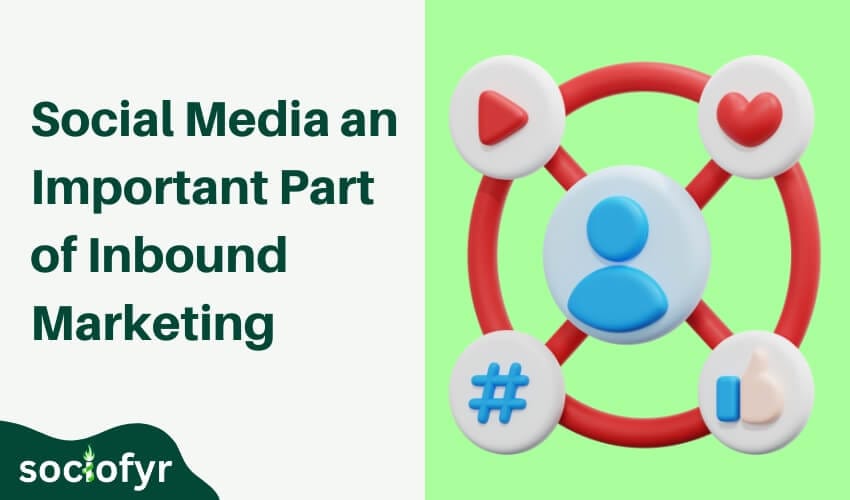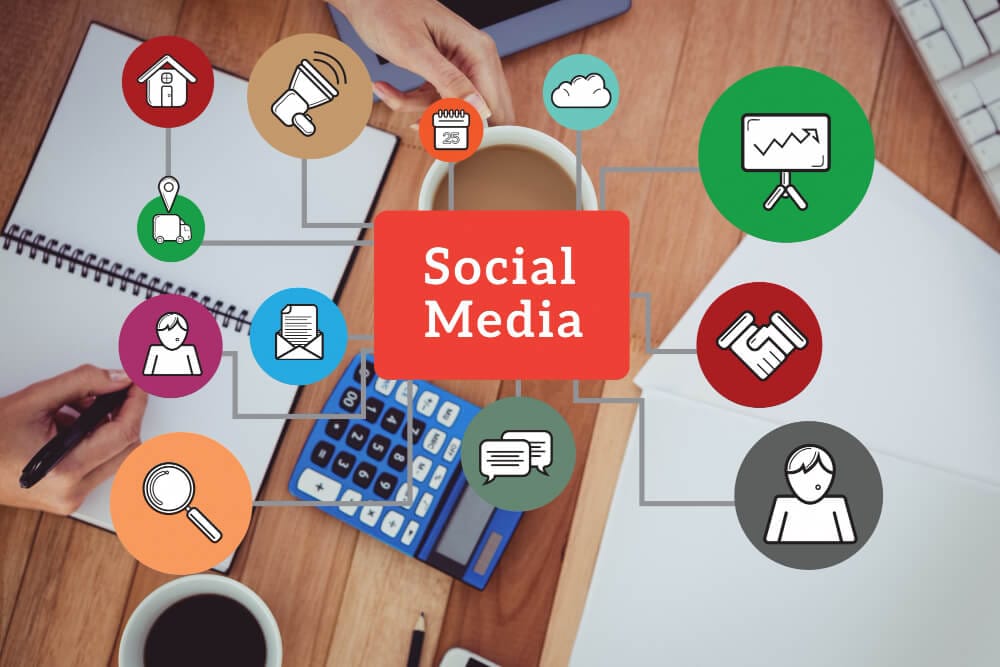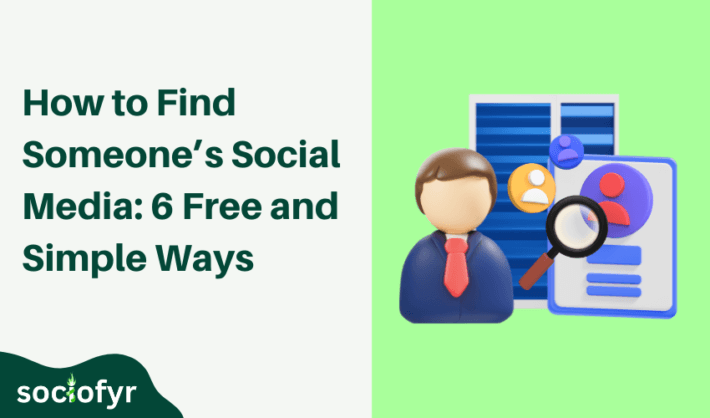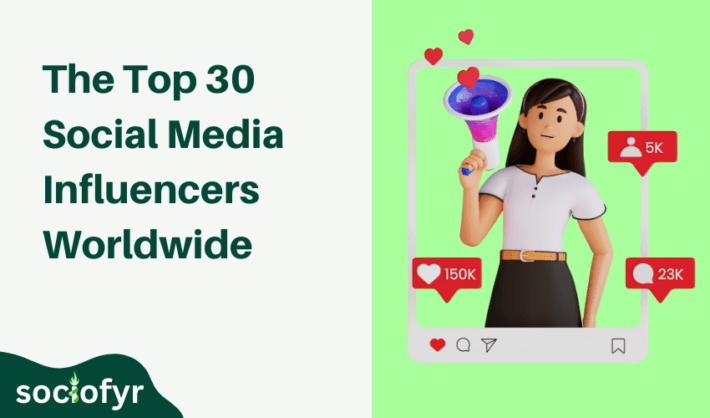Why Is Social Media an Important Part of Inbound Marketing?

Not long ago, businesses had limited opportunities to engage with their targeted audience. They used to rely heavily on traditional marketing strategies to reach the local customer base. However, with the astonishing rise of social media in the last decade, the marketing landscape has completely changed. Platforms once considered only for entertainment have now transformed into business inbound marketing strategy tools, offering access to millions of never-seen-before potential customers worldwide.
In today’s digital era, the question of why social media is an important part of inbound marketing has become critical for businesses aiming for success in the longer run. Social media has entirely transformed old marketing strategies, it has changed the way people interact, communicate, and consume content.
Social media, with billions of users, has the ability to connect brands and businesses with their audience in real-time. As inbound marketing focuses on drawing consumers through valuable content and authentic interactions, social media naturally fits as a powerful tool for boosting this modern marketing approach.
What is Inbound Marketing and How It Differs from Outbound Marketing

Inbound marketing is a modern digital strategy focused on attracting potential customers through relevant content. Unlike traditional outbound marketing methods that often rely on interruptive tactics like cold calls and direct mail, inbound marketing aims to draw customers by addressing their particular needs and interests and how you meet them. Some Outbound marketers also use digital techniques such as PPC (Pay-Per-Click) by buying ads on different traffic sites.
Inbound marketing centers around creating high-quality content that resonates with your targeted audience and optimizing the content for social media networks and search engines that draw organic traffic. Inbound marketing is mainly built on three core principles:
- Attracting
- Engaging
- Delighting
Businesses start the approach by attracting their potential audience with relevant, insightful, and useful content. They then engage them through personalized interactions that build trust and address their specific pain points. Finally, the focus shifts to converting a visitor into a paying customer by providing exceptional experiences and support and turning a satisfied customer into a loyal brand fan.
By prioritizing value and customer ease, inbound marketing fosters long-term relationships and drives sustainable business growth. Now, in this guide we will be providing answers to questions such as why social media is important in marketing? How to use social media for marketing? What is social selling the inbound way? We will provide valuable insights that will answer these questions comprehensively.
Why Social Media is Important in Marketing

Social media provides you with an active market of thousands of potential clients. That’s why social media is an important factor to increase your brand’s awareness and sustainable growth. I have discussed a few factors in detail covering why social media marketing is important:
➤ Increased Brand Visibility
The organic nature of social media allows for pitching the brand’s message loud and clear. By regularly posting valuable content, users gradually start interacting with your social media. When users share, like, or comment on posts, they help spread the content within their own networks, further expanding the brand’s visibility.
Social media provides a natural boost to your content if it’s engaging and, so a single piece of valuable content can reach far beyond its initial visibility, driving brand awareness, attracting new leads, making new customers long-term clients.
This continuous interaction builds trust and loyalty as followers find your brand approachable and trustable. By participating in relevant conversations and staying current with trends, social media helps your brand as a leader in your niche.
This way, you are not only illustrating that your brand does not follow trends but also shapes them. This approach improves the trust and uniqueness of your brand; when social media users regularly find your content to be top-notch and well-researched, they not only love to interact with you but also share your brand in their circle, which draws passive traffic.
➤ Drives Organic Traffic to Your Website
In 2024, social media has 4.62 billion active users globally; platforms like Facebook, Instagram, YouTube, and many others offer unparalleled opportunities for driving traffic to your website. By adopting a well-researched strategy, you can effectively target specific demographics and interests, ensuring your content reaches the most relevant audience; here’s how you can do that:
When sharing compelling content on your social media handles, such as blog posts, articles, and engaging media, you create an opportunity for users to click through and explore your website. Enhanced by strategic call-to-action buttons and targeted advertising, these posts drive organic traffic that is more likely to convert.
Furthermore, social media offers precise targeting of user interests and behaviors, ensuring that your content reaches the right audience at the right time. By regularly engaging with users and optimizing your social media marketing campaigns, you will see a significant boost to your website traffic and overall visibility in the online world.
Understanding of the Latest Trends and User Interests

Social media offers extensive data collection and analytics capabilities that eventually helps in understanding of user interest and market’s latest growing trends. By analyzing engagement metrics such as likes, shares, comments, and follows, businesses can get a clear image of what their consumers are admiring. Social media platforms also offer advanced tools for tracking trends and monitoring discussions, providing real-time information about emerging trends and shifting preferences.
For example, Twitter’s trending topics and Instagram’s Explore page highlight popular hashtags and content categories, helping you to create content that meets the latest demands of consumers. Social media listening tools further allow businesses to monitor conversations about their brand and competitors, offering a thorough understanding of user sentiments and market demands.
This data-driven approach enables businesses to streamline their content and inbound marketing campaigns more effectively. It ensures that your content aligns with current interests and trends, which eventually helps create more meaningful engagement with your targeted audience.
Social Media Influencer Marketing
These days, people are greatly influenced by social media influencers, and influencer marketing offers significant benefits for businesses by leveraging the trust and reach of influential personalities. According to a recent report published by Influencer Marketing Hub, businesses earn an average of $5.78 for every $1 they spend on influencer marketing. Influencers have established credibility and a loyal following within specific niches across social media platforms. It allows brands to reach the targeted audience that might otherwise be difficult to reach.
Influencers can create authentic content that showcases products or services in a relatable context, leading to higher engagement ratios and conversion rates. This approach not only enhances brand visibility but also builds trust and credibility through endorsements from already trusted figures in the particular niche.
Additionally, influencer marketing can generate valuable user-generated content and foster natural community engagement that amplifies your brand’s reach and impact. By partnering with the right influencers, brands, and businesses can surely boost their marketing efforts and achieve their set goals.
Enhanced Return on Investment (ROI)
Social media inbound marketing offers a greater return on investment (ROI) compared to outbound marketing methods. Inbound marketing focuses more on attracting and engaging customers through valuable content and interactions, can generate 54% more leads at a cost that is 62% lower per lead than outbound campaigns. This report answers why is social media an important part of inbound marketing.
Social selling in the inbound way involves building relationships and trust with potential customers through genuine interactions on social media platforms. While, Outbound marketing such as cold calling or direct mail, often involves interruptive tactics which results in lower engagement rates and higher costs per acquisition. In contrast, inbound marketing leverages social media to attract users who are looking for information, resulting in higher-quality leads and efficient use of your marketing budget.
How to Use Social Media for Marketing

After reading valuable insights, we now discuss how to use social media for marketing campaigns. Consider these practices whenever you craft your next social media inbound marketing campaigns:
♦ Understand Your Audience
The success of any marketing campaign mainly depends on pitching your message to the right audience, and inbound social media marketing is no different. By identifying your targeted audience with respect to demographics, interests, and behaviors, you can craft your content and strategies to more effectively meet their specific interests. But how do you identify your targeted audience?
Social media platforms provide several tools to identify, like Facebook Audience Insights and Twitter Analytics, which help businesses analyze user data and craft more effective strategies. This enables more customized content, higher engagement, and better conversions. HubSpot 2024 survey suggests that companies that segment their audience based on specific factors can increase engagement by up to 55%.
♦ Create and Share High-Quality Content
High quality and relevant content that meets user’s interests is the backbone of inbound social media marketing campaigns. Posting regularly with quality maintained will surely increase the leads. Social media platforms offer the opportunity to share valuable media, blog posts, articles, and infographics. We witnessed that if 16 or more blogs are published on our social media, it generated 4.5 times more leads.
♦ Utilize Social Media Listening Tools
Social media listening allows businesses to track activities on social media such as mentions, keywords, and trends that relate to their industry, brand, or competitors. Platforms like Hootsuite or Sprout Special provide insights into customer preferences, market needs, real-time sentiments. A Sprout Special survey suggests that 63% of marketers use social listening to understand consumer needs better.
Knowing these valuable insights helps you to tailor future inbound marketing strategies to meet customer demands and increase engagement.
♦ Run Targeted Social Media Ads
Platforms like Facebook and Instagram help you reach your targeted audience by offering paid ads. These ads will be shown to the users of specific demographics, relevant interests, and behaviors. This ensures that your marketing budget and efforts reach the most relevant audience. Research shows that 50% of marketers consider paid social media ads highly effective in generating new leads and sustaining the old.
♦ Leverage User-Generated Content (USG)
User-generated content such as customer reviews, testimonials, and social media posts, can significantly improve inbound marketing strategy. It illustrates why is social media an important part of inbound marketing. Encouraging your audience to share their experiences with your brand helps to build trust.
Featuring this content on your social media platforms not only extends your reach but also ensures genuine engagement. USG acts as proof that boosts credibility and attracts more potential customers.
♦ Engage Directly with Your Audience
The most important factor in building interest among your customers is engaging with them directly. Timely reply to their messages and responses to comments, queries, and reviews helps you build strong relationships with your audience.
This direct interaction humanizes your brand, showing that you are responsive and attentive to their needs and queries. Addressing feedback and offering personalized solutions, you create a more satisfying experience for your audience.
♦ Best Time to Post New Content
Another reason why social media is important in marketing is that several social media tools provide you real-time data showing the trends and tables of time and dates of the most user engagement. These insights make it easy to schedule your future content posting strategies. Posting content when most of the users of your social media platforms are active can significantly improve engagement and leads.
♦ Lead Generation Content
Providing downloadable e-books, arranging sessions, webinars providing relevant and helpful information to your audience in the selected niche is another way you can improve your visibility and trust in the market.
Final Thoughts on Why Social Media Marketing is Important
In conclusion, we strongly back the concept that social media is an important aspect of inbound marketing. Why is social media an important part of inbound marketing? It provides unparalleled opportunities to engage with relevant audiences to improve your business profits. Through high-quality content, targeted advertisement, and real-time interactions, social media helps businesses attract new leads and retain the old ones, providing growth and increasing return on investment (ROI).
By leveraging the ability of social media to amplify content reach and understand relevant audience interests, businesses can craft their marketing campaigns to be more impactful. Engagement through social selling in the inbound way builds trust and helps your brand to be a leader in your specific niche. Furthermore, user-generated-content (UGS) strengthens credibility and improves organic growth.
Overall, integrating social media into your inbound marketing strategy not only broadens your reach and improves lead generations, but also enhances customer engagement and satisfaction. This approach ensures that your marketing budget is used to reach the targeted audience in the most effective way and aligns with modern consumer behaviors, making social media an essential tool for achieving sustainable success in the latest digital era.
FAQs
How does social media improve brand visibility inbound marketing?
Social media enhances businesses’ visibility by allowing them to distribute their content to a vast audience across various platforms. Social media also provides essential tools for targeted advertising that ensures your content reaches specific areas interested in your product or service.
How can social media influence lead generation?
By running targeted-ads, promoting lead magnets such as ebooks, webinars, and sharing quality content regularly, businesses attract potential customers with high chances of conversion.
Why is social selling an important aspect of inbound marketing on social media?
Social selling focuses on building relationships and trust through meaningful interactions rather than traditional outbound marketing. Engaging with potential buyers in a non-intrusive way, providing value, and addressing their queries, social selling helps your brand as a trusted resource.


